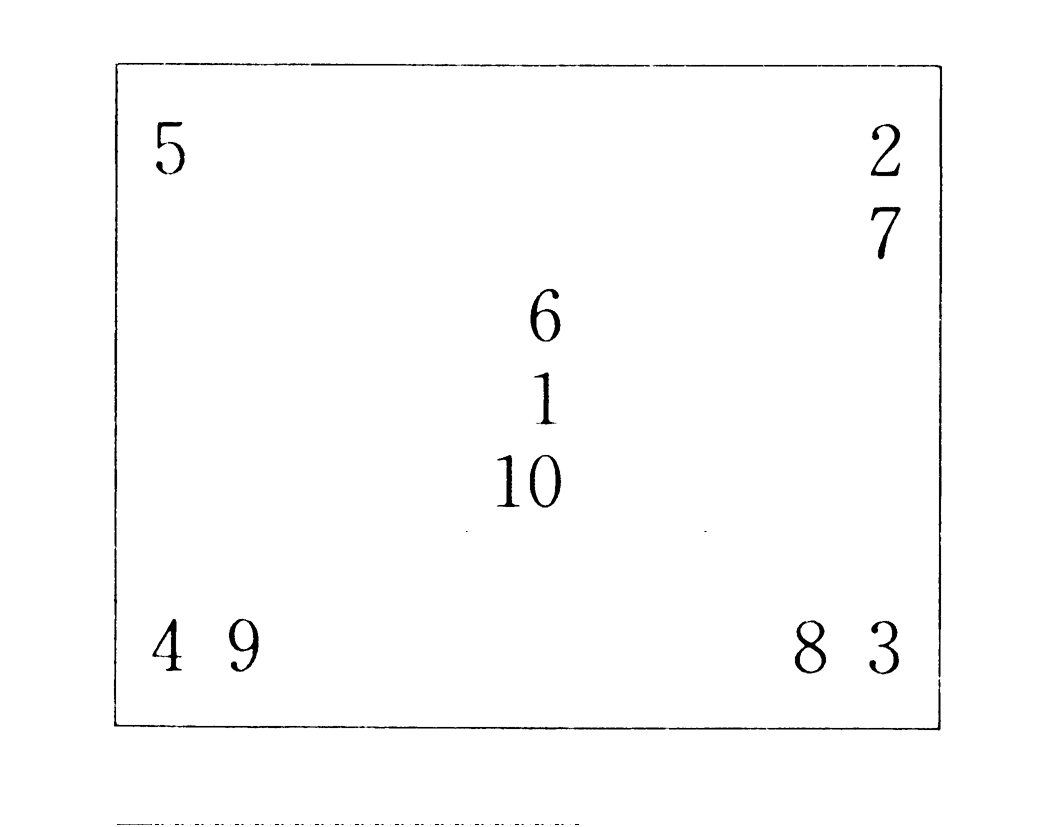
Home About Robert CV The Good Lord Willing and the Creek Don't Rise: Pentimento Memories of Mom and Me Novels Reviews ESL Papers (can be viewed online by clicking on titles) The Many Roads to Japan (free online version for ESL/EFL teachers and students) Contact     |
Robert W. Norris 2001. In Bulletin of Fukuoka International University No. 6: 35-45 Abstract This paper presents several practical lesson plans for teachers dealing with the difficulties faced by Japanese learners in acquiring English relative clauses. The lesson plans are based on the proposition that "noticing" and consciousness-raising activities are the most effective in dealing with the background, needs, and learning tendencies of Japanese university students. Keywords: relative clauses, consciousness-raising, acquisition hierarchy, EFL, ESL, Japanese learners Introduction
The first paper (Norris, 2000: 41-48) of this two-part series examined specific structural differences between English and Japanese relative clauses (RCs), summarized research that has been done on Japanese learners' acquisition and production of English RCs, and proposed that consciousness-raising (CR) and "noticing1" activities provide the most effective classroom instruction for Japanese learners at the university level. Among the factors stated in the first paper (Norris, 2000: 41-48) that must be taken into consideration in the planning of effective lessons for teaching RCs to Japanese learners are the differences in the branching directions of Japanese and English RCs, inherent difficulties involving the number of RC types and relative pronouns, the perceived Acquisition Hierarchy for Japanese learners (see Keenan and Comrie, 1977; Kuno, 1974; Ioup and Kruse,1977; and Schumann,1980), Japanese learners' tendency to use avoidance strategies, the EFL instruction Japanese learners are exposed to, and the necessity of introducing CR activities that are followed by communicative input containing the target structure. This second paper presents a variety of detailed lessons based on the ideas outlined in the previous paper and designed (a) to facilitate CR and noticing of English RC patterns in Japanese university students, (b) to encourage the students' active production of RCs with minimal preparation and maximum personal involvement, and (c) to give follow-up communicative input containing the target structures. The paper is divided into three parts. The first part includes controlled activities that introduce students to RCs through extended descriptions2 and production activities that require students only to "notice" and recognize grammatical features. The second part has activities that guide students to produce RCs with minimum preparation and maximum personal involvement. The third part contains ideas for follow-up input. Noticing and CR Activities Extended Descriptions of RC Patterns3 Write the following patterns on the board (or hand out printouts). Things 1a. a thing that/which + "be" + adjective/p.p./noun/preposition
2a. a person who/that/which + "be" + adjective/p.p./noun/preposition
3a. a place where + there is/are
4a. a time when + there is/are
Go over each pattern and give examples (see Appendix A). Tell the students that although there are some semantic differences between "that" and "which," in daily conversation the differences are not that important. They can substitute one for the other without any loss in comprehension. Pay special attention to the different patterns used for "a place where" and "a place that/which," as well as "a time when" and "a time that/which." Many Japanese students combine patterns and make such RCs as "a place where is many books" when the correct RC is "a place where there are many books." Explain that the "there is/are" pattern is normally used to express ideas about numbers and amounts. Expressions such as "many," some," "few," "a," or the exact number are used with "there is/are." Explain that other words can be substituted for "thing," "person," "place," and "time." For example, "food," "man," "country," and "season." Tell the students to bring these notes to each class. Follow-up Noticing and CR Exercises Prepare a list of sample RCs based on the above patterns (see Appendix A). Put the RCs in a mixed-up order. Hand out the list to the students, who work either individually or in pairs to match the RCs with the pattern numbers listed above (e.g., "a person who works hard" is a 2b). A variation is to hand out a text filled with many RCs. The students mark where the RCs are located on the text and write the corresponding pattern numbers next to them. Speed and accuracy competitions can be encouraged. The teacher can also read from a text and have individuals or team captains compete to identify which patterns they hear. The teacher can put on the board expressions for interrupting in order to facilitate interest and participation. For example:
"Hold on for a minute..." "Sorry to interrupt, but..." "Just a minute please..." "Excuse me for interrupting, but..." Have the students take out a piece of paper and tell them you want them to take dictation on some Japanese expressions you will say. Dictate 8-10 Japanese RCs such as the following:
2. e no migi gawa ni tatteiru onna no hito 3. e no manaka de koohii o nondeiru otoko no hito 4. e no ue no hidari no kado ni aru tokei 5. e no ue no migi gawa ni aru posutaa 6. e no hidari gawa ni aru doa kara hashite deteiru otoko no hito 7. e no shita no migi gawa ni aru nimotsu 8. e no manaki ni aru mado
2. the woman who is standing in the right side of the picture 3. the man who is drinking coffee in the center of the picture 4. the clock that is in the top left side of the picture 5. the poster that is in the right side of the picture 6. the man who is running out of the door that is in the left side of the picture 7. the bag that is in the bottom right side of the picture 8. the window that is in the center of the picture
Subject/Intransitive Verb Subject/"Be" Verb/Complement
2. The clock that is in the top left side of the picture is old. 3. The woman who is standing in the right side of the picture likes the man who is running out of the door that is in the left side of the picture. Production Exercises Password 14 Divide the class into small groups. Write definitions for 3-4 nouns--each beginning with the same letter--using various patterns from the previous lecture. For example, the following can be used for "England," "egg," and "evening."
b. a food that is often eaten at breakfast. c. a time when the sun goes down. In the next class, have the students sit in the same groups as before. Have them prepare another sheet of paper to put their guesses on for each list, which will be passed around at timed intervals. Set a time limit (three minutes works well) in which they have to discuss and guess the original nouns for each list. When the teacher says "Go," each group passes its original list to the group next to it. At the end of each designated time interval, the teacher says "Time's up" and the lists are passed again. The groups write down their guesses until all the lists have been checked. Eight or nine lists seem to work well. The teacher then reads out the answers. The group with the most correct guesses is declared the winner. Password 2 The same lists as Password 1 or new lists can be used with this exercise. The key is that the students understand that all the words in the list begin with the same letter. Divide the class into three groups. One member from each group sits in a chair at the front and facing away from the blackboard. The teacher writes a list on the blackboard. Three different lists work better, but it takes a little more time to write them on the board. The teacher explains what the initial letters are and says "Go." The members of each group begin to shout out RC "hints" to the "hot seat" member, who tries to guess the correct words. The teacher should demonstrate how to give the hints and what the players' responsibilities are before beginning the activity. The first "hot seat" member to guess all the words (about six works best) wins a point for his or her team. Continue several times, each time changing the students in the "hot seats." For more drama and excitement, the teacher/moderator can increase the difficulty of the words and the number of points for each round. If the words prove too difficult or the students have difficulty in coming up with good hints, the teacher can also help out by providing his own hints. Password 3 In this version, the teacher is the one who gives the hints. The students can work either individually or in small groups. The same lists used in Password 1 or different lists can be used. The teacher has the option of telling the first letter of each list or not telling. The teacher reads out RC definitions and the students write down their guesses. The students should be encouraged to use such classroom English expressions and questions as "Would you please repeat that?" and "What was number 3?" When all the definitions for the lists are finished, the teacher gives the answers. Likes/Dislikes 1 Review the patterns outlined in the RC extended descriptions section. Write the following on the board:
I don't like people who _______. Likes/Dislikes 2 A variation of Likes/Dislikes 1 is to have the students walk around the class interviewing other students in a "Find Someone Who" format. Before beginning the exercise, the teacher can write questions such as "What kind of people do you like?" "What kind of places do you like?" and "What kind of movies do you dislike?" on the board. The students being interviewed must use RCs in their answers. At the end, students can be called on to report the answers they received. Another possibility is to have students search for other students with similar likes and dislikes. Likes/Dislikes 35 Put the students in groups of 6-8 people. Have them play janken (paper, scissors, stone) to decide the order they have to speak in. Put the following on the board:
His name is _. He likes people who _, but he doesn't like people who _. Her name is _. She likes people who_, but she doesn't like people who_. A Rod Lesson6 The teacher writes the words "a," "the," "another," and "the other(s)" on the board. He also writes "Take _____ rod." He puts several wooden rods of the same color in a shallow box. He walks up to a student, motions for her to take a rod, says the word "take," and points to the board, indicating that the student must select the correct word to fill the blank between "take" and "rod." After eliciting "a," the teacher says "Take one more rod," points again to the board, and elicits "another." This elicitation of "another" continues until there is one rod remaining, at which time "the other" is elicited. The teacher repeats the process with another student until there are two or three rods remaining. He tells the student to take all the remaining rods, and elicits "the others" or "the other rods." Next, the teacher puts three rods in the box, goes to another student, and elicits "take a rod," "take another rod," and "take the other rod." He then puts two rods in the box, goes to another student, and elicits "take a rod," and "take the other rod." He puts one rod in the box, goes to a different student, and elicits "take the rod." Finally, he puts several rods in the box, goes to another student, tells her to take all the rods, and elicits, "take the rods." During this phase there is usually a lot of confusion and guessing among the students. The teacher remains nonjudgmental about their guesses. He simply refuses to allow them to take the rods until the correct answer is forthcoming. The teacher goes to the board and writes the following extended descriptions:
"the" -- the only one "another" -- one more "the other(s)" -- the remaining one(s) The teacher repeats the "Where is the rod?" questioning for each of the four corners, making sure the students understand the use of "the" in "in the top right corner," "in the bottom left corner," etc. Next, the class is divided into groups of four or five students. A shoebox lid is placed upside down before each group. This is preferable to a book or piece of paper in order to prevent confusion about the use of "in" (as opposed to "on"). Each student is assigned a role within her group: "action person," "___ing question person," "___ing answer person," "past-tense question person," and "past-tense answer person." In groups of four, the "action person" can also take the role of "past-tense answer person." Each group is given ten rods (two red, two blue, two green, one yellow, and three white). The lesson now turns into a Total Physical Response (TPR) exercise with students carrying out the following five commands:
2. Take the other red rod and put it in top right corner of the box. 3. Take a white rod and put it in the bottom right corner of the box. 4. Take another white rod and put it in the bottom left corner of the box. 5. Take the other white rod and put it in the top left corner of the box. After these five commands and the questioning and answering have been completed, the teacher points to each of the five rods and asks, "Which rod is this?" The students are guided to use RCs in answering "It is the rod which is in the center/top right corner/etc. of the box." The teacher asks why "the" is used in front of "rod." After eliciting "the only one in the center/top right corner/etc.," the teacher adds "the one(s) that exist in a particular space" to the extended description of "the" written earlier on the board. After some review of locative prepositions and making sentences such as "It is to the right of the rod which is in the bottom left corner of the box," the teacher continues the TPR lesson with these new commands:
7. Take the other green rod and put it under the rod which is in the top right corner of the box. 8. Take a blue rod and put it to the left of the rod which is in the bottom right corner of the box. 9. Take the other blue rod and put it to the right of the rod which is in the bottom left corner of the box. 10. Take the yellow rod and put it under the rod which is in the center of the box.
The teacher also writes the words "first," "next," and "finally" on the board. The students are told to tell the story chorally of what they have done. For example, "First we put a red rod in the center of the box. Next, we...." When finished, the students write the ten steps. The teacher collects the papers, corrects any mistakes, and hands them back in the next class. Picture Lessons7 In following classes, the teacher reviews the extended descriptions for "a" and "the," hands out copies of pictures, and has the students produce sentences about the pictures. One possibility is using picture differences. Working in groups, the students must find the differences and make sentences describing the differences. For example, "In the first picture the man who is in the top left side has long hair, but in the second picture he has short hair." In this picture difference lesson, the teacher walks around giving personal assistance where necessary. Various grammatical problems invariably arise, but the fundamental focus should be on the students' article and RC usage, with the teacher guiding the students to use their own knowledge, to test out their own hypotheses, and to make their own discoveries. A variation of the picture difference activity has the students practice oral production by putting them in small groups and having them choose a captain (or rotating captains) who must come to the front of the class and report the sentences to the teacher. The captains can bring the pictures with them to help in producing the sentences they have created, but cannot use written sentences to read from. Another lesson involves the use of the "future possibility" conditional sentence grammar pattern. The teacher puts the following pattern on the board.
2. If the boy who is crossing the road doesn't look both ways, he will be hit by a car. 3. If the car that is in the left side of the picture turns at the corner, it will hit the boy.
1b. If she falls down, she might break her leg. 1c. If she breaks her leg, an ambulance will take her to the hospital. 1d. If she goes to the hospital, she might meet a handsome doctor. 1e. If she meets a handsome doctor, she will fall in love and get married. A different picture lesson uses one "before" picture (showing a dirty room) and one "after" picture (showing the same room after it has been cleaned). The teacher reviews the extended descriptions of "a" and "the," then adds this new criteria:
"the" -- the thing(s) or person(s) which the writer or speaker has been talking about and which the reader or and listener knows. In other words, old information both writer and reader (or speaker and listener) know about. New information becomes old information the second time it is used. After the students complete about ten sentences, each beginning with "The (window/bed/books/etc.)," they are given the "after" picture, which should contain at least two new items that were not in the "before" picture. The students are told to produce sentences about what has been done to the room. The teacher gives one sample sentence: "The window has been opened." The teacher makes no further reference to the new criteria for using articles, but does tell the students he knows nothing about the second picture. He has information about just the first picture. Follow-up Exercises In order to increase the odds of students' retaining what they have learned and turning it into long-term memory, it is important to provide them with follow-up activities that contain RC patterns. Here are a few activities that I have found useful. Snakes and Ladders8 For this game you need some dice, markers (coins, pins, erasers, etc.), and copies of the game "board" (see Appendix B). I use a B-4 size piece of paper with anywhere from 35 to 70 squares. Half the squares are empty and half have sentences with relative clauses in them. About half of the sentences should have mistakes in them. These mistaken sentences can either be made up or taken from the students' homework. The board should have some snakes and ladders drawn on it where the snake heads and ladder tops are in a square with a higher number and snake tails and ladder bottoms in a square with a lower number. Divide the class into groups of 4-5 students and give each group a copy of the game board and a die. Write on the blackboard some sentences the students can use while playing the game and interacting. For example:
"I think this sentence is incorrect. It should be (the student's own correction)." "I agree." "I disagree." "It's your turn." "The snake ate you." "You get to go up the ladder." "Sorry, time's up."
b. The winner is the first person whose score takes him or her to or beyond the finish line. c. If a player lands on a sentence that has already been discussed, he or she automatically goes on to the next unworked-on sentence. d. If one of the players feels that the others are wrong about a grammar point, he or she should note down the number of its square and ask the teacher at the end of the game. Other Activities Turn the tables on the usual dictation technique of teacher reading and students writing. Have the students dictate texts or pictures that contain RCs to one another or to the teacher. A good source for ideas is Davis and Rinvolucri's (1988) Dictation. Card and picture games that require students to interact and use RCs in trading and exchanging information can be found in Hadfield's (1990) Intermediate Communication Games. Cloze and other activities that use song lyrics are also fun and useful. Conclusion There is no easy path or solution for the Japanese learner attempting to acquire English RCs. It is a process that requires constant effort. To that end and taking into consideration the structural differences between English and Japanese RCs, the large number of RC types and pronouns, the perceived AH of RCs, the tendency for Japanese learners to use avoidance strategies, and an EFL background in which these learners are more competent in written as opposed to oral production, I have proposed in this paper a variety of controlled and semi-controlled activities designed to stimulate the process of "noticing" the RC grammatical patterns, raising the students' consciousness of them, and creating opportunities to use the them in meaningful interaction. The key point is that these activities can provide a shortcut leading toward confidence in "thinking backwards," producing longer sentences, and overcoming avoidance strategies. There is a limit to what the teacher and students can do in the classroom environment. In the end, the student must do the necessary work outside of class to turn new and passive knowledge into a part of his or her permanent and active knowledge. It is my hope that the research and teaching suggestions included in this and the previous paper can provide a bridge between the two types of knowledge and lead to the acquistition of RC patterns. NOTES 1. Schmidt (1990) distinguishes between perceived information, or input, and information that is noticed by the learner, or intake. He proposes that this noticing of linguistic forms is critical to subsequent processing of the forms. For empirical data supporting his proposal, Schmidt analyzed his own acquisition of Brazilian Portuguese (Schmidt and Frota, 1986). Analysis and correlation of Schmidt's personal diaries and taped conversations with a native speaker interlocutor indicated that just being taught a certain grammatical form was insufficient for subsequent use of the form in the taped conversations. He had to first notice the form in communicative input before he began to produce it on his own. 2. Smith (1977) distinguishes between two kinds of pedagogically oriented language descriptions in reference to pedagogical grammar and the matter of by what means and in what form information about language and language learning teachers should be imparting to students. One kind is extended descriptions, or "on-line grammatical information tailored to the exigencies of particular learning situations." The other kind is concentrated descriptions, or "metalinguistic statements or observations exclusive of learner variables." 3. The patterns listed in this section include the four basic types of relative clauses described by Celce-Murcia (1983: 366). Teachers should note that an asterisk signifies a direct or indirect object as pointed out in Keenan and Comrie's (1977) Accessibility Hierarchy and Kuno's (1974) "subject embedded, object focus" (SO) and "object embedded, object focus" (OO) RC types. The SO and OO types are believed to be the most difficult for Japanese learners to acquire. See also Norris, 2000: 48. 4. Adapted from Ur, 1988: 268-272. 5. Adapted from Maley and Duff, 1978: 70. 6. This section is taken from Norris, 1992: 95-104. 7. Portions of this section are taken from Norris, 1992: 95-104. 8. Adapted from Rinvolucri, 1984: 28-32. REFERENCES Celce-Murcia, M. and D. Larsen-Freeman. 1983. The Grammar Book: An ESL/EFL Teacher's Course. Rowley, Mass.: Newbury House. Davis, P. and Rinvolucri, M. 1988. Dictation: New Methods, New Possibilities. Cambridge: Cambridge University Press. Hadfield, J. 1990. Intermediate Communication Games. Hong Kong: Thomas Nelson. Ioup, G. and A. Kruse. 1977. "Interference versus structural complexity in second language acquisition: Language universals as a basic for natural sequencing" In H.D. Brown, C.A. Yorio, and R.H. Crymes (eds.): On TESOL 77: Teaching and Learning English as a Second Language: Trends in Research and Practice. Washington D.C.: TESOL. Keenan, E.L. and B. Comrie. 1977. "Noun phrase accessibility and universal grammar." Linguistic Inquiry 8: 63-99. Kuno, S. 1974. "The position of relative clauses and conjunctions." Linguistic Inquiry 5: 117-36. Maley, A. and A. Duff. 1978. Drama Techniques in Language Learning. Cambridge: Cambridge University Press. Norris, R. W. 1992. "Raising Japanese Students' Consciousness of English Article Usage: A Practical View." Fukuoka Women's Junior College Studies Vol. 44: 95-104. Norris, R. W. 2000. "Learning to Think Backwards: Japanese Students and the Acquisition of English Relative Clauses." Bulletin of Fukuoka International University No. 4: 41-47. Rinvolucri, M. 1984. Grammar Games. Cambridge: Cambridge University Press. Schmidt, R. and S. Frota. 1986. "Developing basic conversational ability in a second language: A case study of an adult learner of Portuguese" in R. Day (ed.): Talking to Learn: Conversations in Second Language Acquisition. Rowley, Mass.: Newbury House. Schmidt, R. 1990. "The role of consciousness in second language learning." Applied Linguistics 11(2): 129-58. Schumann, J.H. 1980. "The acquisition of English relative clauses by second language learners" in R.C. Scarcella and S.D. Krashen (eds.): Research in Second Language Acquisition. New York: Newbury House. Smith, M. 1977. Aspects of Future Reference in a Pedagogical Grammar of English. Frankfurt/Main: Lang. Ur, P. 1988. Grammar Practice Activities. Cambridge: Cambridge University Press. Appendix A -- RC Pattern Examples Things 1a. a test that is difficult (adjective) 1a. a thing that is used for eating (past participle) 1a. a thing this is a brand of furniture (noun) 1a. a thing that is in my pocket (preposition) 1b. a house that has many windows 1c. a thing that people use for eating* 1d. a newspaper whose writers know their subjects well People 2a. a mother who is kind (adjective) 2a. an actor who is liked by many people (p.p.) 2a. a man who is a teacher (noun) 2a. a student who is in the library (prep.) 2b. a person who likes ice cream 2c. a writer who(m) people respect* 2d. a man whose father is a teacher Places 3a. a place where there are many books 3b. a city where tourists can see many sights 3c. a restaurant that is expensive (adjective) 3c. a place that is visited by many tourists (p.p.) 3c. a place that is a shrine (noun) 3c. a city that is in Japan (prep.) 3d. a country that imports oil 3e. a place that many people go to* 3f. a school whose teachers have much experience Times 4a. a month when there are many holidays 4b. a season when people travel 4c. a month that is hot (adjective) 4c. a time that is set aside for relaxing (p.p.) 4c. a day that is a national holiday (noun) 4c. a holiday that is in December (prep.) 4d. a month that has many holidays 4e. a time whose importance is well known Appendix B -- Snakes and Ladders Game Board (When I have a .gif or .jpg file ready, I'll post it here) |
